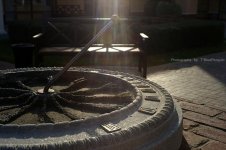jaapv
RFF Sponsoring Member.
keithwms said:Why not place an AR-coated UV/IR filter over the actual sensor? Is there space to do that?
There are UV/IR conversions done by companies like maxmax for digital UV/IR shooting that remove the need to put a vis-blocking filter on your lens... this is of course done on dSLRs so that you can compose TTL and AF normally. All they do is take out the normal hot mirror or sensor cover and replace it with whatever you want. So you can do Uv, IR, UV+vis, IR+vis, UV+IR only, etc. It seems to me that one could just as easily put any desired hot/cold mirror over the M8 sensor itself, as long as there is ~1mm of space in front of the sensor to do this. I use thin filters for microscopy in my lab all the time. No big deal.
In fact, I'd be totally shocked if somebody isn't doing this and selling the service- it would be a ten minute operation, and the glass plates that would be installed can be mass produced for maybe a hundred bucks apiece, including AR coating for the visible.
(N.b. I will not speculate on what Leica will charge you for what I am describing)
With all due respect to some of the posts above... habitually using a physical or software filter because of unwanted UV / IR sensitivity of your sensor... well I'm not going to say it. You just have to be kidding.
Apologies to offended readers if I am overlooking something obvious about your particular sensors, which I have not yet seen, but I have been following this M8 issue from a distance. There is an M8 in a local store and I could stop by and look and see if it is possible to do what I am saying.
Yes- there is something obvious, you probably were not around here when it was discussed extensively. On an RF the distance between lens and sensor is about half of a SLR and many lenses stick into the body to get even closer. That means the angle of incidence of the light on the edges of the sensor varies wildly. As IR filters are sensible to this angle the images would have deteriorated unacceptably, uncorrectable in software as well. This makes an IR filter in that spot impossible at the present stage of technology, a larger sensor impossible and the current camera a miracle.
Last edited:


